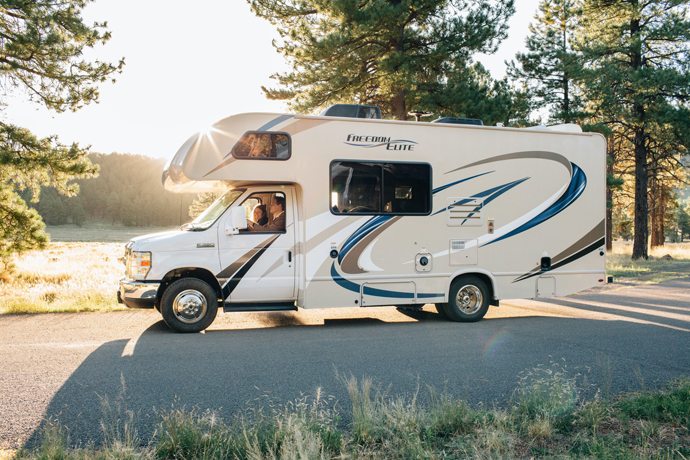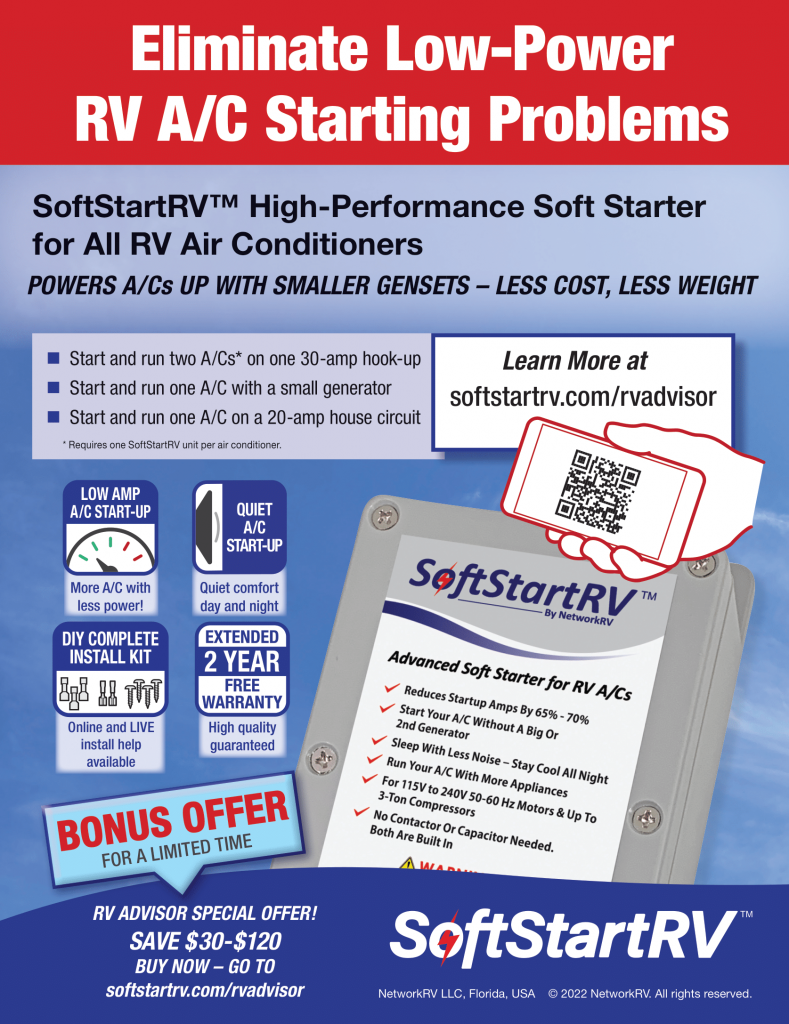RVs are cost-effective and can save families between 60 and 70% on a trip, according to Money. Thankfully, RVs are safe, and very few road accidents happen in them. But if it’s your first time driving an RV, it can take some getting used to. Here’s how to stay safe when driving an RV for the first time.
Take frequent breaks
When driving a great distance, it’s best to take a break every two hours. But this rule applies to driving a vehicle that you’re used to. As an RV first-timer, you’ll concentrate extra hard and this will make you feel tired. This is why you should take more frequent breaks and pull over whenever you feel fatigued. If you can, switch places with another driver every so often, so you can have a decent rest. It’s important you plan your stops around RV-friendly service stations, too. You can download an app to your phone which will tell you where you’re able to safely stop with your RV.
Drive slower than normal
In most U.S. states, the maximum speed limit for RV drivers is between 70 and 75 mph. Most RV drivers say the ideal speed is between 63 and 65 mph. As it will be your first time driving an RV, you should take it slow and make sure you take your time when driving around bends as the weight and length of the RV can make this type of maneuver tricky. There are some dangerous roads in America and, if you have to drive your RV on one, you should always be extra cautious. Highways are often risky, including Colorado’s Million Dollar Highway and Highway 431 in Alabama. Texas is well-known for being home to some of the deadliest highways. These include Interstate 45, Interstate 35, and Interstate 10. Excess speed is often the cause behind crashes on these highways, which is why you should always reduce your speed and allow extra time to complete your journey.
Remember your height
When you’re busy navigating an RV for the first time, it’s easy to forget that you’re a lot taller than normal. RVs can be twice the height of standard cars and are typically between 10 and 12 feet tall. At this height, you may not make it under bridges, particularly in rural locations. To avoid an accident, make sure you know the height of your RV up to the top of the air conditioning unit. When driving, take note of road signs which should state the height of bridges. You also need to make sure you avoid drive-thru fast-food chains and similar locations as many of them have height restrictions below the size of an RV. Even if they don’t, the turns are usually tight and aren’t suitable for a large RV.
Plan your journey
Before you set off for your first RV road trip, take a little time to plan your trip. There are lots of roads, locations, and even states which aren’t RV-friendly, and the last thing you want to do is get into trouble with local law enforcement agencies. For example, New York doesn’t allow RVs on the longest parkway in the state, Taconic State Parkway. Meanwhile, some roads in California have a ban on vehicles over 40 feet long, which is a problem if you’re towing a trailer on the back of your RV. Using RV route planning tools, such as RV Trip Wizard, are highly recommended as they help you get wherever you want to go safely.
Watch the road
It’s recommended that car drivers leave a stopping distance of 2 seconds between them and the car in front. But, as RVs are a lot larger and heavier than standard cars, you need to increase your stopping distance significantly. There is no set stopping distance rule for RV drivers, and veteran RV drivers argue anything between 6 seconds and 10 seconds is fine. First-timers should err on the side of caution and stick to the upper end of this range. You can check that your stopping distance is correct by choosing an object, such as a lamppost or building, that the car in front of you passes. Then, count how long it takes you to pass the same object to see if you’re far enough away from them.
Safe parking
Sadly, with an RV, you can’t just quickly swing into a parking space and jump out of the vehicle, like you can with a car. Parking an RV takes time, precision, and patience. Ideally, drive to the far end of the parking lot and park away from other vehicles. This is beneficial if you’re a novice RV parker as you won’t feel under so much pressure from other drivers. It’s usually best to reverse into a space. Have a passenger get out of the RV to guide you. Make sure you constantly check your mirrors and keep your eyes on the passenger on the ground in your mirror at all times. Parking an RV isn’t easy for anyone, so don’t worry if you have to make multiple attempts at it. If you’re able to, before your trip, practice parking your RV in an empty parking lot so you can get a feel for how to do it.
Check the weather
In windy conditions, RVs are at risk of tipping over if driven. In fact, studies show that a wind speed of just 10 mph can make it harder and more dangerous to drive an RV. It’s also risky to drive in icy weather or when it’s raining heavily as you could slip on the road. It is possible to drive slowly to overcome this problem, but you’re unlikely to feel confident driving in these conditions. Before your first RV trip, check the weather. If bad weather is forecast, delay your trip. You also need to keep an eye on the weather forecast throughout your journey. When things aren’t looking good, park up somewhere safe or head to the nearest RV-friendly campsite.
Driving an RV for the first time is an experience you’ll never forget. Make sure it’s a safe and enjoyable ride by following the above road safety tips and be sure you’re coverd by our recommened Tire & Wheel Coverage Plan!































